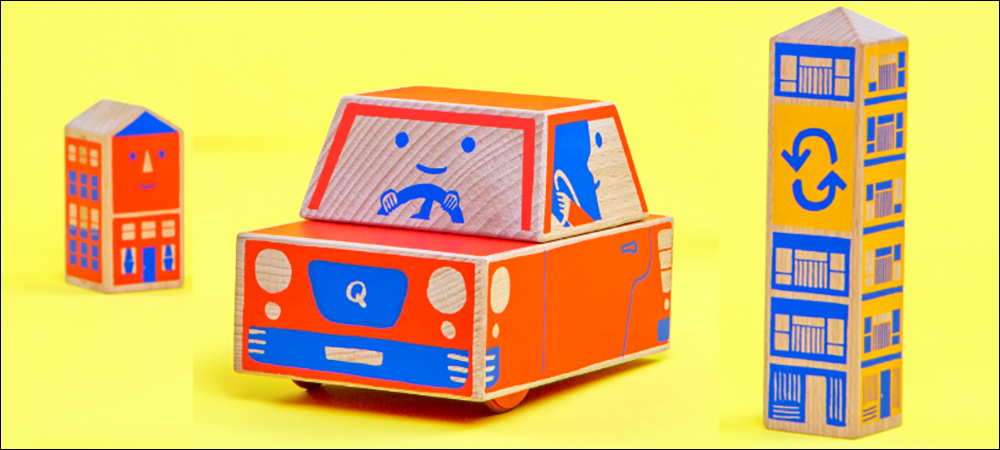- Built for Play Without Internet, Apps or Screens
- Driving Through a Block City
- Short Read Range for Precise Location
Radio frequency identification technology is helping children learn digital skills in a physical environment, thanks to a new toy produced by Qubs. The company says its product, known as Coby Block, is firmly rooted in the physical world for small children, while enabling them to learn skills that could code the technology of the future while they physically manipulate the toy parts without screens or smartphones.
The Cody Block game consists of a wooden vehicle with a built-in HF RFID reader, a processing chip and a motor to drive forward, as well as wooden block buildings and houses, with RFID tags installed inside each object. Despite the intelligence built into the car, it comes with no lights, switches, audible sounds or touch pads. The only visible link to the digital age, the company reports, is a USB port where a cable can be plugged in to energize its rechargeable battery.
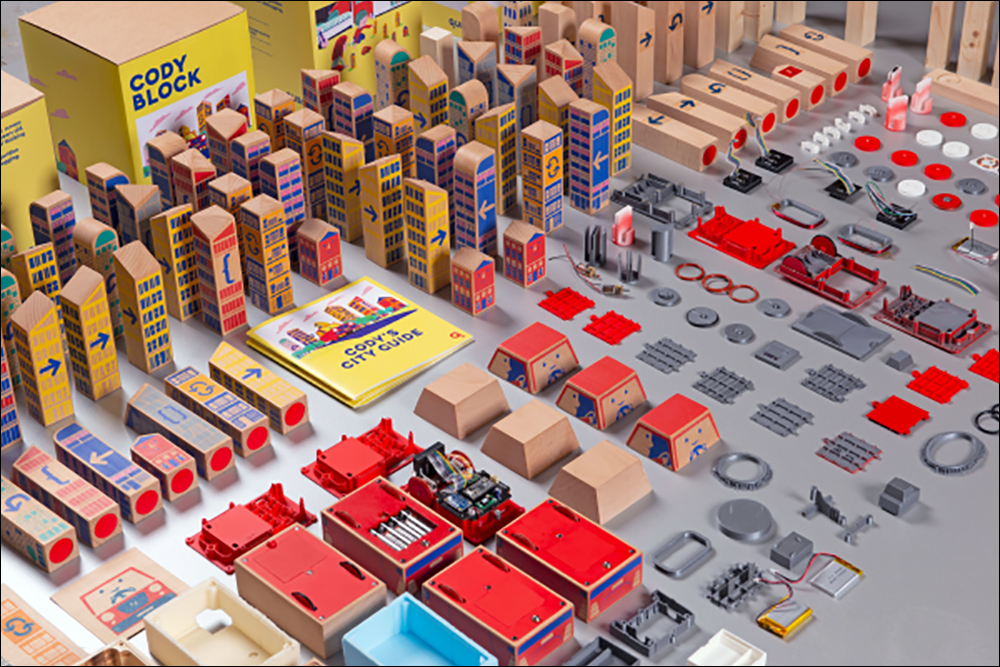
Built for Play Without Internet, Apps or Screens

Oscar L’hermitte
According to Oscar L’hermitte, Qubs’ head of design, the company is attempting to combine the old and the new with this game, which earned STEAM accreditation by The Toy Association. The toy is intended for children ages three to 12, L’hermitte says. The startup, based in Zurich, Switzerland, employs a team of engineers who also work in France, the United Kingdom and Portugal. Hayri Bulman, the company’s founder and CEO, conceived of games using simple wooden blocks not unlike the traditional toys previous generations enjoyed, which require manual manipulation rather than mouse clicks and touch pads.
Behind the fun, the company’s games, inspired by Montessori-style educational play, are intended to teach reasoning, critical thinking and spatial awareness, Bulman reports. He was formerly an IT executive at General Electric and at Xerox. The Cody Block game centers around a car called Cody that moves independently and changes course as it detects wooden blocks arranged by players. The goal is for children to plan a path allowing Cody to move through the block city and return to home base.
The game works straight out of the box, L’hermitte says. Players simply arrange the game’s 16 blocks around a space, which could be a few feet in size or could cover an entire room or a larger space. The car is designed to drive forward until it receives an instruction based on the reading of an RFID tag in one of the blocks. Each block contains an embedded 13.56 MHz HF RFID tag, compliant with ISO 15693, which is encoded with a unique ID number.
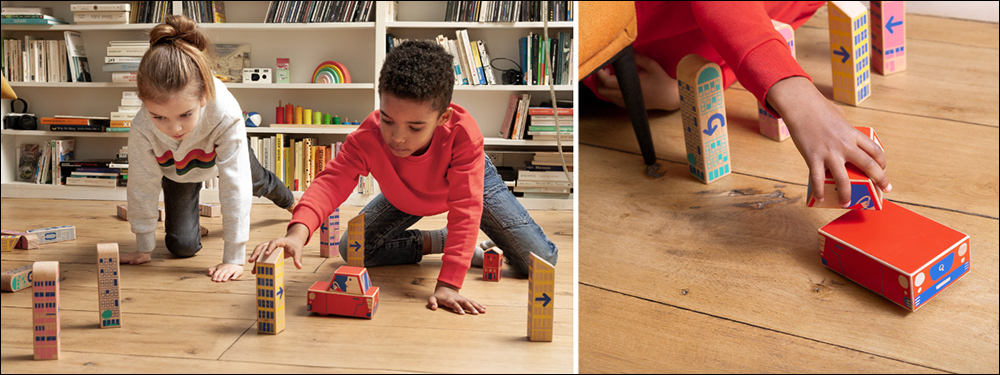
Driving Through a Block City

Hayri Bulman
The car’s built-in processor stores four different actions based on the ID number of the block tag. For instance, when it detects and reads a specific tag’s ID, it will either turn left, right or around 180 degrees, or it will begin recording the next steps the car undergoes. To play with the toy, children can simply turn on the car by snapping the top onto the bottom. They can then place it somewhere in the city environment they have built with the blocks. That starting point is their home base, and the car is intended to return there.
Once the two parts of the car are snapped together, it begins to drive forward. If the player wants to stop the car, they can just remove the top. The car will then start driving around the blocks, reacting to tag reads by altering its course. “The technology is invisible, and that’s what makes the experience magical for the child,” L’hermitte says. There is no app required to set up the interactions. Users do not need to use their phone to get it started or open an account in the cloud. There is also no need for connection to Wi-Fi or Bluetooth or cellular networks, he notes.
The coding skills are developed through the fourth tag-read option, by which a tag read of a specific block prompts the car to record interactions. For instance, the car could proceed to turn left turn and right, then make a U-turn at the subsequent blocks. When the card reads the tag of another “recording” block, the recording action stops. The child can then have the vehicle repeat the recorded commands, and the car will follow the commands set up by the player, helping to aid its return to home base, even without any blocks present.
“So basically,” L’hermitte explains, “it’s memorizing a set of actions.” It can thus teach a child the basics of programming, including the principals of debugging and sequencing. This recording set of features is typically intended for children ages seven and up, he says, “because it’s quite an abstract concept for them to get. But once they understand this, they can really make their playground bigger,” and more sophisticated.
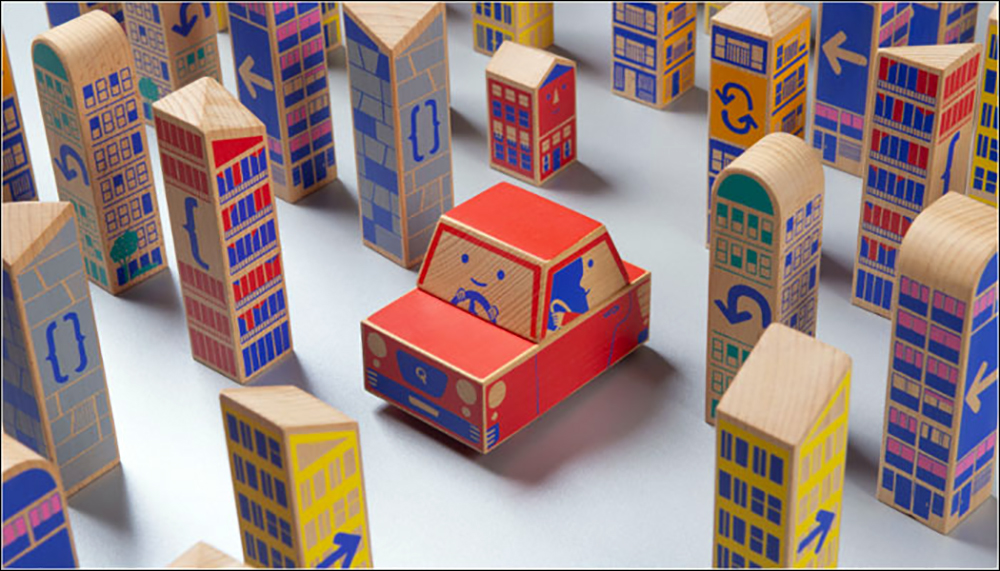
Short Read Range for Precise Location
To make a seemingly simple game work this way, L’hermitte says, there was considerable engineering required. The company needed to conduct a series of tests to confirm the technology’s health safety for play by small children, in accordance with European and U.S. standard requirements. Another challenge involved confirming the proper read range specific to where the vehicle is in proximity with a given block.
“We had to get a reading range of about 12 centimeters [4.7 inches],” L’hermitte says, based on a depth of approximately 4 centimeters (1.6 inches) inside the block where the tags are positioned, while also accommodating the space required for the car to read the tag, slow down and turn before it reaches the block. To accomplish this precise read range, the company’s engineers designed specific tags and readers that could be manufactured by a third party.
The rechargeable battery can typically provide active play for about six hours before it requires an approximate one- or two-hour recharge. The Cody Block game, sold on the company’s website for $240, is the first product being offered, and a second game is scheduled for release in the near future, known as Matty Block. That game, centered around the theme of gardening, will also use RFID technology—in this case to teach kids the basics of mathematics.
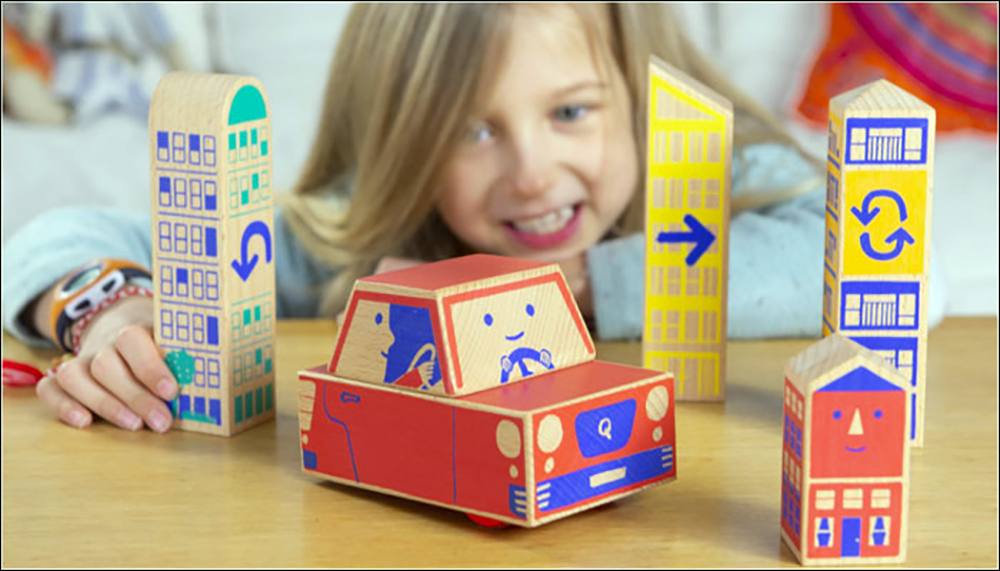
The game will include tiles that represent vegetables at a seeding station, printed with specific numbers, and each tile will have an embedded RFID tag. The game base (the seeding station) reader will interrogate the tags as children place the tiles down. Then, as they add, subtract or multiple the tiles, the game reader will capture the tag IDs, and the game will audibly let them know whether they got the equation right. Both games are designed to be sustainable, with blocks made from beech wood, and with minimal built-in plastic.
Key Takeaways:
- Qubs’ games leverage RFID to keep technology out of sight for players so that children can play the old-fashioned way, without screens, apps or the Internet.
- The tags in block buildings, and read in a wooden car, allow players to build their own system that requires critical thinking, similar to how coding works.

